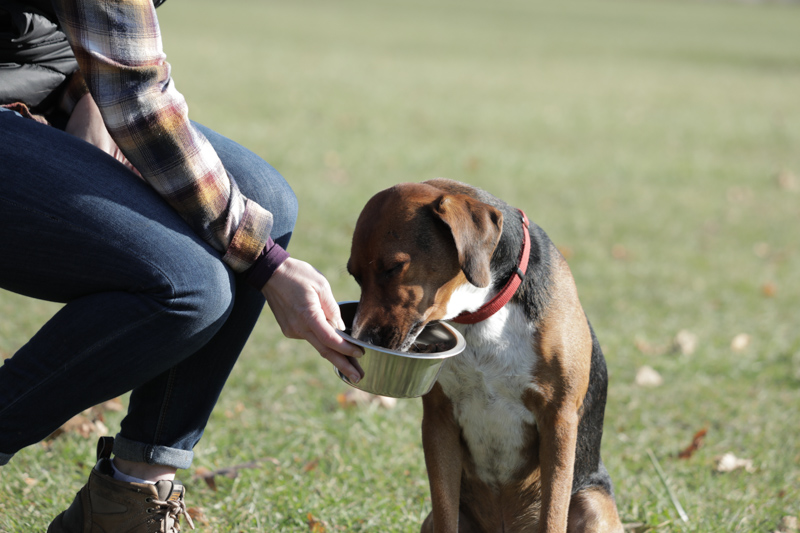Your active dog has unique nutritional requirements, and it’s your job to make sure those needs are met!
There’s nothing more enjoyable than sharing your life with an active dog. Whether he participates in sporting competitions or accompanies you on long hikes, watching him run and jump is so gratifying. But like human athletes, physically active dogs require high-quality foods to stay fueled throughout their activities. The right diet will also help prevent your pup from injury, and promote faster recovery. If you have a four-legged athlete, read on to learn more about his nutritional needs!
What exactly is an active dog?
While some dogs are perfectly content relaxing at home, others, such as working dog breeds, prefer to be outdoors performing more demanding tasks. But what constitutes an “active dog”? By definition, canine athletes are dogs that partake in strenuous activities such as dock diving, agility and livestock herding. But an “active dog” is a more general term for any pup who participates in high-intensity exercise on a regular basis.
Meeting the nutritional needs of your active dog
In short, food is fuel. It gives us energy no matter what we are doing – and that’s especially important for active dogs. “Diets for dogs that need high levels of energy in their diet should be higher in fat and protein than a diet for the average dog,” says veterinarian Dr. Bradley Quest. “High protein diets for athletic dogs usually contain at least 28% protein, and many active dog formulas contain more.” Dr. Quest recommends reading the label to ensure that most of the protein in your pet’s food is coming from meat and meat meal sources, and that the amino acids within those protein sources are balanced. If you’re unsure, talk to your veterinarian.
The great news is, active dogs don’t need specially formulated dog food. A high-quality brand that offers high protein content will work very well – just be sure to find one your dog enjoys! “All of the Essence formulas of dog food would be excellent choices for active dogs,” says Dr. Quest. “They all contain a minimum of 35% protein in the form of meat and meat meals as well a minimum of 17% fat, which is an excellent source of calories for active dogs.”
When to feed
Pinpointing an ideal feeding time for an active dog can be tricky. If you feed him too soon before activity, it can cause digestive upset, and feeding him immediately after exercise can result in bloat. So when should you feed him? “It is a good idea to feed an active dog multiple times during the day,” says Dr. Quest. “If feeding before strenuous activity, it is best to feed your dog at least two hours before exercising and if you feed your dog after exercise it is best to wait at least an hour so that he has time to physically cool down and rehydrate before he fills his stomach with food.”
What to feed
Most dog foods that meet AAFCO requirements for all life stages are acceptable for active dogs. In order to meet AAFCO requirements, a company is required to ensure their food contains a minimum of 22.5% of protein and 8.5% of fat. The majority of high-quality dog foods contain much more. “High levels of animal fat such as beef, pork, chicken and other poultry fat are important because they provide a lot of calories for active dogs,” says Dr. Quest. “They also help make food taste good so dogs want to eat all they need for their nutritional needs.”
Another thing to look for when shopping for a food for your active dog is vitamin and mineral content. These micronutrients are very important and are always supplemented in complete and balanced diets.
Hydration also needs to be considered. Dogs need hydration before, during, and after exercise. While you can’t give your dog Gatorade, there are other ways to make sure he gets the hydration he needs – through diet, for instance. “Wet pet food contains more water which may be important in individual dogs who may not drink a lot of water throughout the day,” says Dr. Quest.
If you’re worried that your active dog isn’t getting all the nutrients he needs to maintain his activity level and body weight, talk to your veterinarian. In the meantime, take a look at the food you’re currently feeding your pup to make sure it’s meeting all the above criteria!
[adning id=”35547″]








